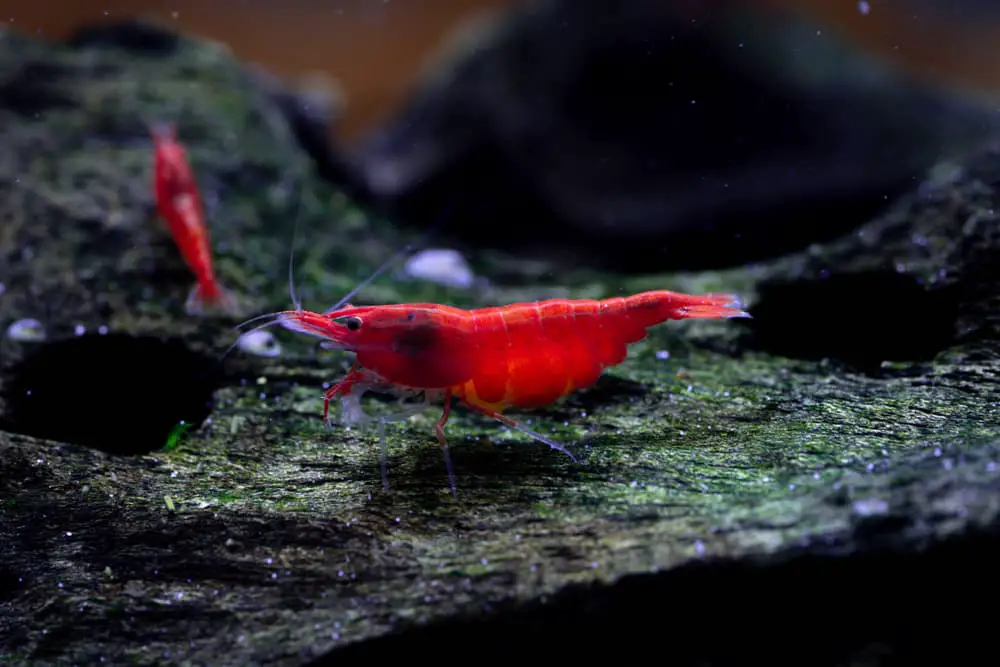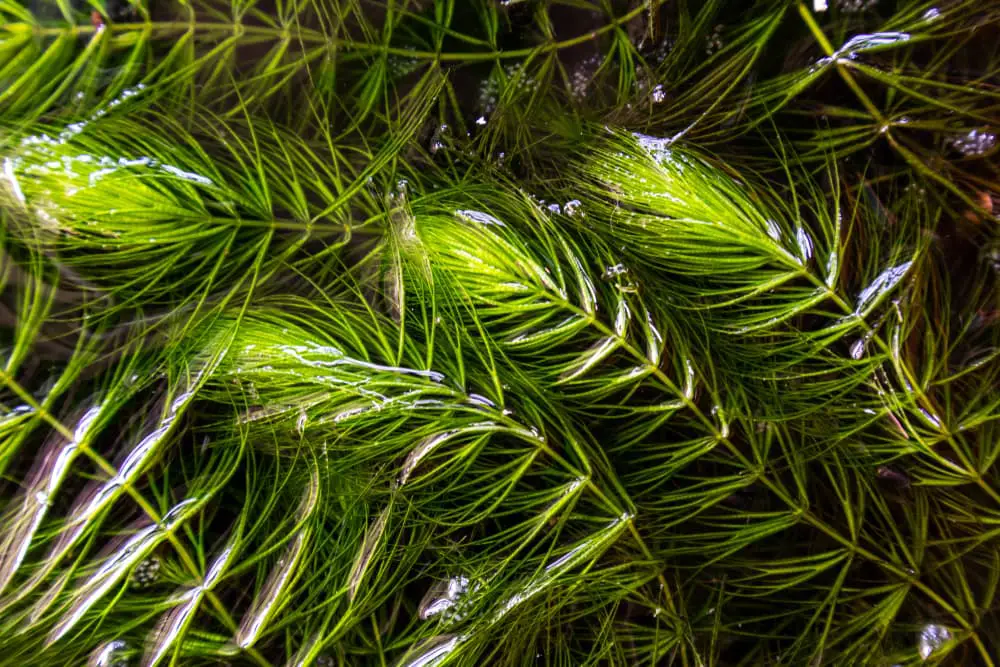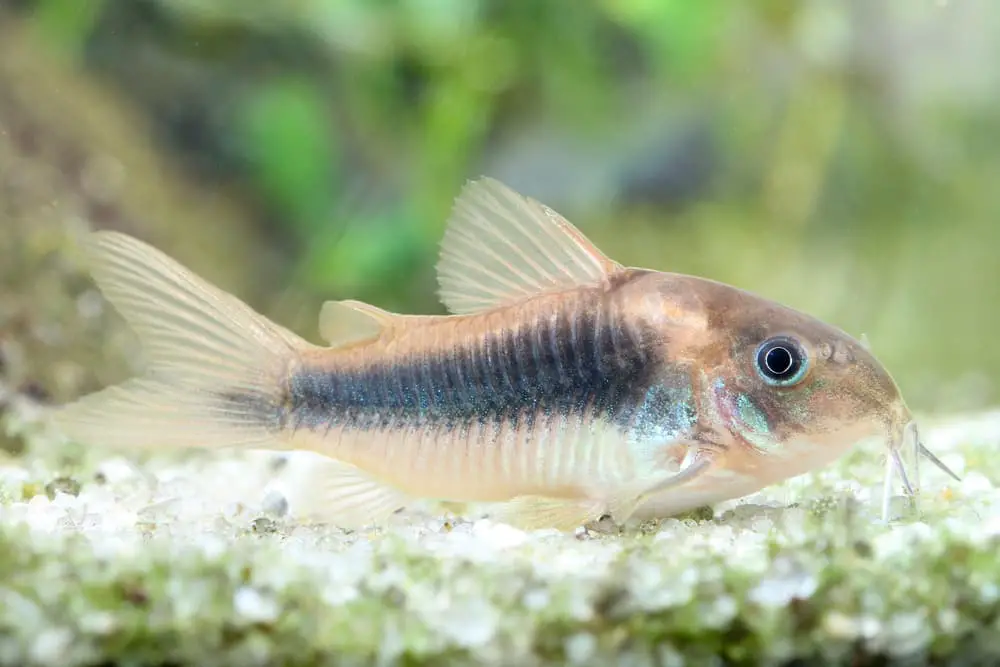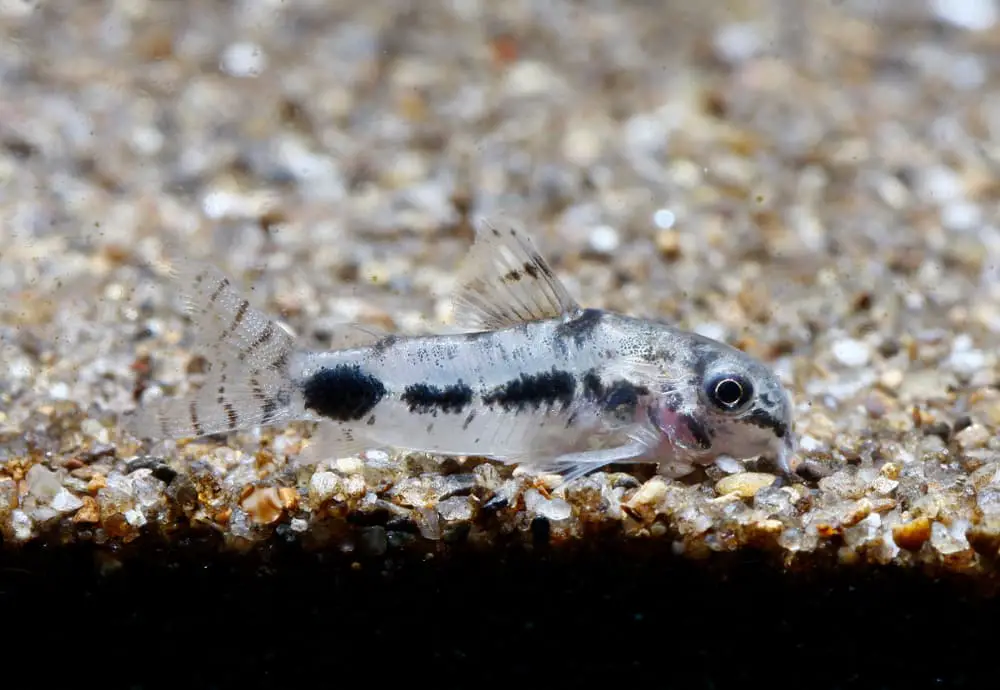Can Cory catfish and shrimp coexist peacefully in the same aquarium? Yes, they can, although there are some factors to consider, especially regarding the size of the shrimp and the behavior of the Cory catfish.
In my own experience, I have found that Cory catfish and shrimp can indeed live together in the same tank. However, it’s not always a straightforward situation. The type of Cory catfish and the size of the shrimp are both important factors in this equation. Adult shrimp tend to be fine with Cory catfish, but smaller shrimp, or shrimplets, can sometimes become a snack for the catfish.
Cory Catfish Behavior
Cory catfish, also known as Corydoras, are popular for many aquarium enthusiasts due to their peaceful nature and active behavior. Native to South America, these small, armored catfish are generally bottom dwellers who spend much of their time scavenging for food in the tank’s substrate.
One of the most interesting aspects of Cory catfish behavior is their social nature. Corydoras are schooling fish, which means they prefer to be in groups of their own kind. Keeping them in a group of at least six can help them feel safe and reduce stress. When they are comfortable in their environment, Cory catfish exhibit playful, energetic behaviors such as swimming rapidly to the surface of the water and then back down again.
In terms of their interaction with other species, Cory catfish are usually peaceful and get along well with many other types of fish. However, they can be opportunistic when it comes to food. While their diet mainly consists of bottom-dwelling invertebrates, plant matter, and small aquatic insects, they may consume small shrimp, especially shrimplets, if they come across them. This does not mean that Corydoras are aggressive hunters; they’re more like opportunistic feeders.
Remember that each fish, even within the same species, can have different behaviors. Some Cory catfish may never bother shrimp at all, while others may occasionally snack on shrimplets. Monitoring your fish’s behavior is crucial to ensuring a peaceful aquarium environment.
Understanding the behavior of your Cory catfish can help you make informed decisions about introducing other species, like shrimp, into your aquarium. The key is to create a comfortable environment where both the Cory catfish and the shrimp can thrive. This includes providing plenty of hiding spots for the shrimp, especially if they are young or small, and maintaining a balanced diet for your Cory catfish to reduce the chances of them seeing the shrimp as food.

The Importance of Shrimp Size
When considering the compatibility of Cory catfish and shrimp, the size of the shrimp is a key factor. This is primarily due to the feeding behavior and mouth size of the Cory catfish.
Adult shrimp are usually large enough to avoid being viewed as potential food by Cory catfish. They are agile and quick, capable of maneuvering around the tank to evade any unwanted attention. Additionally, their larger size means they can’t easily be consumed by the Cory catfish. Hence, adult shrimp typically can live safely in a tank with Cory catfish without becoming a meal.
On the other hand, shrimplets, or baby shrimp, present a different story. Due to their small size, they can be seen as potential food by the Cory catfish. While Cory catfish aren’t aggressive hunters, they are opportunistic feeders, which means they may consume shrimplets if they come across them during their scavenging.
It’s also important to note that when you first introduce shrimp into your aquarium, they may be smaller than their full adult size, especially if they’ve been shipped. Shrimp that are not fully grown are more likely to become snacks for Cory catfish.
Therefore, when introducing shrimp into a tank with Cory catfish, it’s often recommended to let the shrimp population establish and grow in a separate tank before adding them. This gives the shrimp time to grow to their adult size, increasing their chances of cohabitating successfully with Cory catfish.

Tips for Introducing Shrimp to a Cory Catfish Tank
Introducing shrimp into a tank inhabited by Cory catfish requires careful planning and consideration. Here are some tips to make the transition smoother and increase the chances of successful cohabitation.
Wait for the Shrimp to Mature
As previously mentioned, size matters when it comes to shrimp and Cory catfish cohabitation. Mature, adult shrimp are less likely to become a meal for the Cory catfish due to their larger size. Therefore, it’s generally recommended to wait until your shrimp have reached their adult size before introducing them into the tank with Cory catfish.
Increase the Shrimp Population
Before adding shrimp to a Cory catfish tank, it can be beneficial to allow the shrimp population to increase in a separate tank. A larger shrimp population means there are more shrimp to spread around the attention of the Cory catfish, reducing the likelihood of any one shrimp being targeted.
Provide Plenty of Hiding Spots
Shrimp, especially shrimplets, appreciate having plenty of hiding spots in the tank. These can be provided in the form of plants, rocks, caves, or shrimp-specific decorations. Providing ample hiding spots gives the shrimp a place to retreat to when they feel threatened, which can be especially important during the initial introduction period.
Monitor Feeding Times
Cory catfish are bottom feeders and will spend much of their time scavenging for food in the substrate of the tank. To prevent them from viewing the shrimp as potential food, make sure the Cory catfish are well-fed. This doesn’t mean overfeeding, which can lead to other health problems, but simply ensuring they are getting a balanced and sufficient diet. Monitor feeding times to ensure all fish are getting their share of the food.
Observe Their Behavior
Once the shrimp have been introduced into the tank, it’s important to observe the behavior of both the Cory catfish and the shrimp. Look out for signs of stress or aggression. You may need to reconsider their cohabitation if you notice the Cory catfish actively hunting the shrimp.
Following these tips can improve the chances of successfully introducing shrimp into a Cory catfish tank. Remember, each aquarium is unique, and what works for one might not work for another. Always pay close attention to your aquatic pets’ specific needs and behaviors.

Observations on Different Cory Catfish Species with Shrimp
Corydoras, more commonly known as Cory catfish, are a large family of freshwater catfish with over 160 known species. These species vary significantly in size, behavior, and dietary habits, which can impact their compatibility with shrimp.
For instance, smaller Cory catfish species, such as the Pygmy Cory (Corydoras pygmaeus) and the Salt and Pepper Cory (Corydoras habrosus), are generally more compatible with shrimp. These species are small, peaceful, and less likely to view shrimp as food. Their small size also makes them less intimidating to shrimp, which can lead to a more harmonious tank environment.
On the other hand, larger Cory catfish species may pose a higher risk to shrimp, especially to shrimplets. While they are still generally peaceful fish, their larger size and mouth can unintentionally harm small shrimp. These species include the Peppered Cory (Corydoras paleatus) and the Bronze Cory (Corydoras aeneus).
It’s also crucial to note that behavior can vary even within the same species. Some Cory catfish may never show interest in shrimp, while others might occasionally snack on shrimplets. Therefore, observing the behavior of your specific fish is key to ensuring a peaceful cohabitation.
Additionally, tank conditions can also influence behavior. Cory catfish that are well-fed and have plenty of space are less likely to bother shrimp. Also, providing ample hiding places for shrimp can further reduce the chance of them being bothered by the Cory catfish.

Special Considerations for Shrimplets and Cory Catfish
Shrimplets, or baby shrimp, require extra attention when they are to share an aquarium with Cory catfish. Their small size makes them more vulnerable, and they may be viewed as potential snacks by the catfish. Here are a few considerations to keep in mind for successful cohabitation.
Safe Spaces for Shrimplets
Ensure your tank has an abundance of hiding spots. Plants, rocks, and other decorations can create nooks and crannies where shrimplets can hide from larger inhabitants like Cory catfish. Mosses are particularly effective as they provide intricate hideouts that are difficult for larger fish to penetrate.
Adequate Feeding
Just like with adult shrimp, ensuring that your Cory catfish are well-fed can help deter them from seeing shrimplets as potential food. Provide a balanced diet, and monitor feeding times to ensure all the fish are getting their share.
Gradual Introduction
Shrimplets are best introduced to a Cory catfish tank gradually, and ideally, only after they have reached a larger size. If possible, consider raising the shrimplets in a separate tank until they are big enough to fend for themselves.
Observation
Keep a close eye on the interactions between your Cory catfish and the shrimplets, especially in the initial days after introduction. Look out for signs of predation or stress, and be prepared to separate the shrimplets if necessary.
Species Consideration
As previously mentioned, the species of Cory catfish in your tank can make a difference. Smaller species, such as the Pygmy Cory, are less likely to pose a threat to shrimplets.
Following these guidelines can significantly improve the chances of successful cohabitation between shrimplets and Cory catfish. However, always remember that each aquarium is unique, and what works for one might not necessarily work for another. Observation and adaptation to the specific needs of your tank inhabitants are key to maintaining a balanced and harmonious aquarium environment.

Conclusion
In conclusion, while Cory catfish and shrimp can coexist, it is important to consider the specific species of Cory catfish and the size of your shrimp. Generally, adult shrimp are safe, but smaller shrimplets may be at risk. Knowing your fish’s behavior is crucial. With proper care and observation, you can successfully create a lively and harmonious aquarium with both Cory catfish and shrimp.
FAQ
Q: Can Cory catfish and shrimp live together? A: Yes, they can, but the size of the shrimp and the behavior of the Cory catfish play a significant role in whether they can coexist peacefully.
Q: Are shrimplets safe with Cory catfish? A: It depends on the specific Cory catfish species and its behavior. Some may not bother the shrimplets, while others may see them as food.
Q: What should I do before introducing shrimp into a Cory catfish tank? A: It’s generally recommended to let the shrimp population grow a bit before introducing them to the tank with Cory catfish. This reduces the chances of the shrimp becoming a snack for the catfish.
